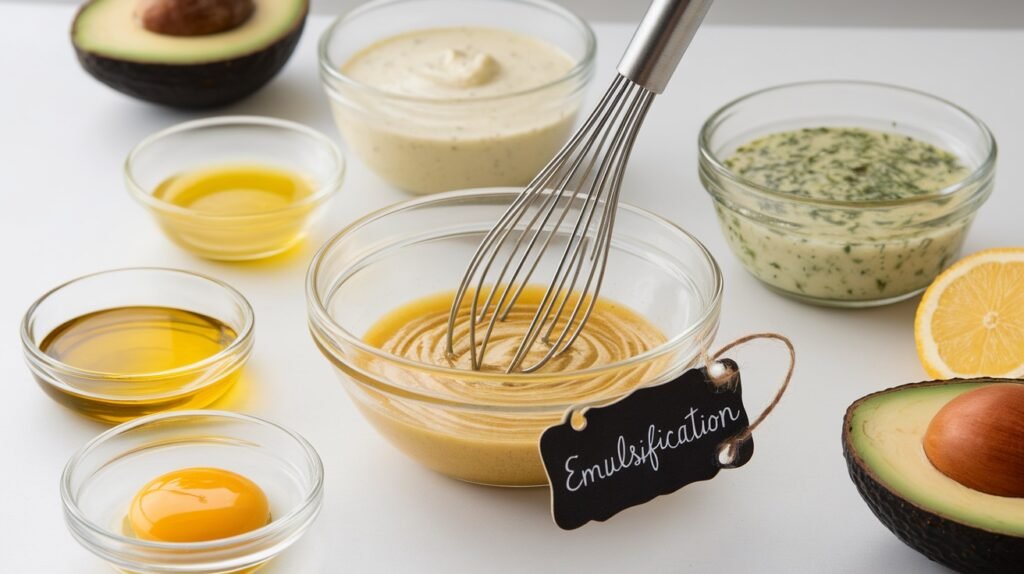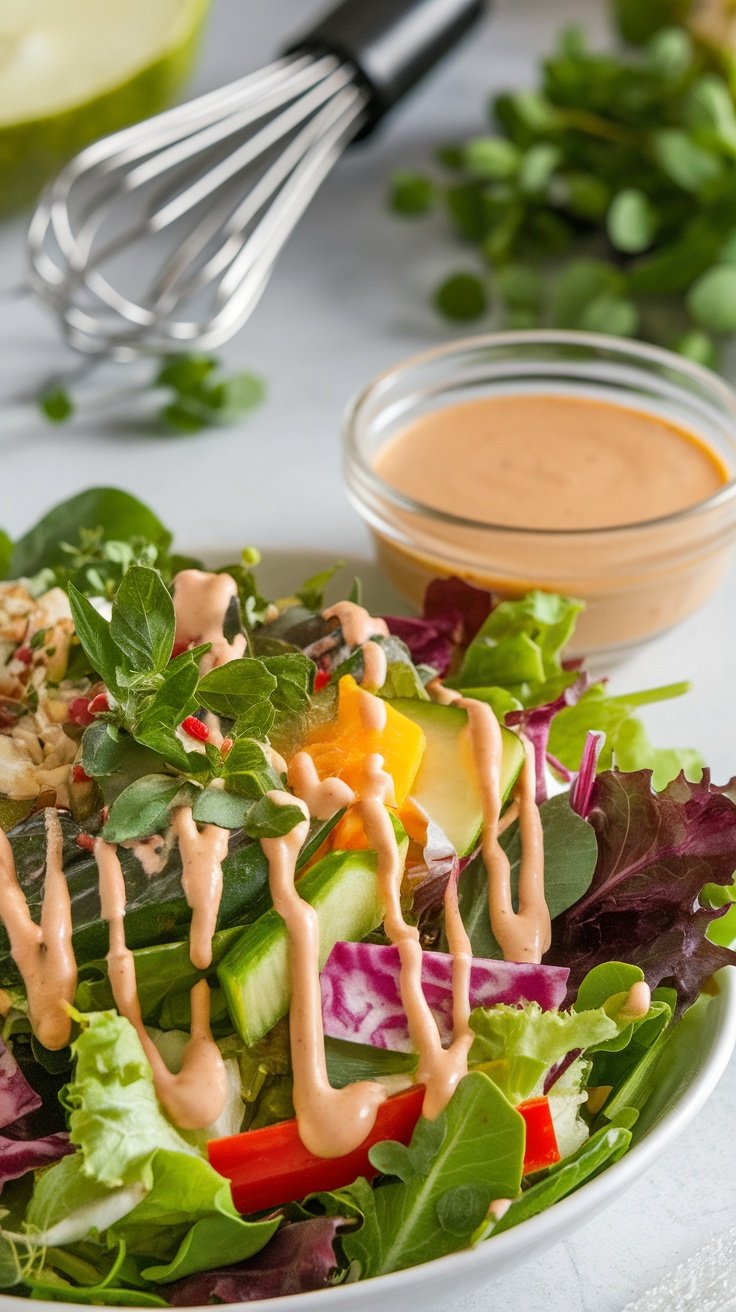Perfectly Creamy Salad Dressings: The Science of Emulsification

Ever wondered how to elevate your salads into something extraordinary? The secret lies in the art of emulsification. This technique transforms simple ingredients into creamy, luscious dressings that coat your greens beautifully. With just a few steps, you can make dressings that rival those from gourmet restaurants, all from the comfort of your kitchen.
This guide will not only provide you with essential tips on emulsification but also offer delicious dressing recipes you can easily whip up at home. Imagine a rich, creamy dressing that clings to every leaf of lettuce, enhancing the flavor and texture of your salads.
Understanding Emulsification
Emulsification is a key technique in the culinary world, particularly when it comes to creating creamy dressings that coat salads beautifully.
This process involves combining two liquids that typically do not mix, such as oil and vinegar. By whisking them together, you create a stable mixture that adds a delightful texture and flavor to your dishes.
Mastering this technique not only enhances your salads but also allows for infinite variations in flavor, opening the door to a world of delicious homemade dressings.
Why Homemade Dressings Shine
One of the joys of making your own salad dressings is the ability to customize them to your tastes. Whether you prefer a classic vinaigrette or a rich, creamy dressing, the flavor potential is limited only by your imagination.
Homemade versions often boast a freshness and vibrancy that store-bought options lack. With simple ingredients, you can create dressings that elevate your salads from ordinary to extraordinary.
Essential Ingredients for Creamy Dressings
Creating a vibrant dressing requires just a few staple ingredients. Olive oil serves as the base, providing a rich texture, while vinegar adds the tangy brightness.
Incorporating Dijon mustard can help stabilize the emulsion, and a touch of honey or maple syrup can balance the flavors perfectly.
Don’t forget to season with salt and pepper, and feel free to experiment with your favorite herbs or spices to elevate the flavor further.
Step-by-Step Guide to Making Creamy Dressings
Making your own salad dressing is a straightforward process. Start by combining vinegar and mustard in a bowl. Whisk them together until they are well mixed, ensuring an even distribution of flavors.
Next, while whisking continuously, slowly drizzle in the olive oil. This gradual addition is critical for achieving a successful emulsion. Once combined, season with salt, pepper, and any additional herbs.
For storage, keep the dressing in a sealed container in the refrigerator. A quick shake before serving will help reintegrate the ingredients.
Serving Suggestions for Your Salad
Once your dressing is ready, it’s time to bring your salad to life. Start with a mix of fresh greens and colorful vegetables, artfully arranged on a plate.
Drizzle the creamy dressing over the top, allowing it to glisten on the vibrant colors of the salad.
For an enhanced presentation, consider serving the dressing in a small bowl alongside the salad, accompanied by a whisk and fresh ingredients, inviting others to indulge in the fresh, healthy experience.
Health Benefits of Homemade Dressings
Opting for homemade salad dressings provides numerous health benefits. These dressings generally contain fewer preservatives and artificial ingredients than their store-bought counterparts.
Moreover, by using quality ingredients, you can control the amount of sugar and salt, making your salads not only tastier but healthier as well.
With the right balance of flavors and textures, your salads can become a nourishing and satisfying part of your diet.
Unlocking the Secrets of Emulsification

Emulsification is the process of combining two immiscible liquids, such as oil and vinegar, into a stable mixture. The result is a smooth, creamy dressing that enhances your dishes with depth and complexity. This technique is essential for crafting vinaigrettes, creamy dressings, and even sauces.
The taste of these homemade dressings is often richer and more vibrant than store-bought versions, allowing you to customize flavors to suit your palate. Whether you prefer a tangy vinaigrette or a velvety ranch, mastering emulsification opens the door to endless culinary possibilities.
Ingredients
- 1/2 cup olive oil
- 1/4 cup vinegar (balsamic, red wine, or apple cider)
- 1 tablespoon Dijon mustard
- 1 teaspoon honey or maple syrup (optional)
- Salt and pepper to taste
- Herbs or spices of choice (optional)
Instructions
- Combine Ingredients: In a bowl, whisk together the vinegar, Dijon mustard, and honey until well mixed.
- Slowly Add Oil: While whisking continuously, slowly drizzle in the olive oil. This gradual addition helps to form the emulsion.
- Season: Once combined, season the dressing with salt, pepper, and any additional herbs or spices.
- Store: If not using immediately, store in a sealed container in the refrigerator. Shake well before serving.
Cook and Prep Times
- Prep Time: 5 minutes
- Total Time: 5 minutes
- Servings: 8 servings
- Calories: 120kcal per 2 tablespoons
- Fat: 14g
- Protein: 0g
- Carbohydrates: 1g












Add comment